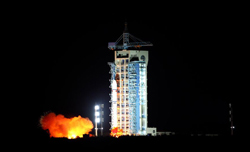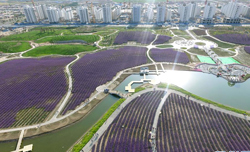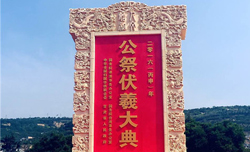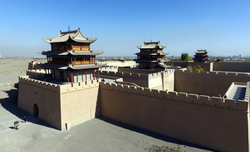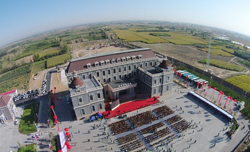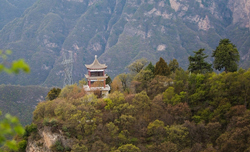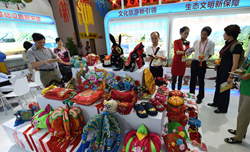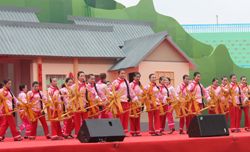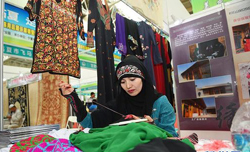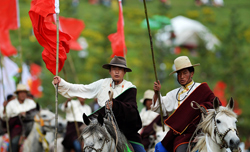Specials
Unique Gansu
Updated: 2016-09-22By Li Xiaoxu ( chinadaily.com.cn )
|
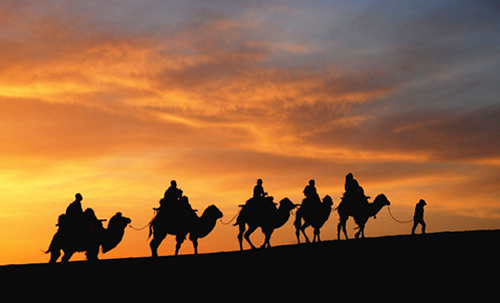 |
Intorduction Gansu province in Northwest China is an important province along the Silk Road, an ancient trade road that has come to life in recent years due to the Belt and Road Initiative. Located in the upper reaches of the Yellow River, northwest China, Gansu is considered one of the cradles of Chinese culture. The province is home to many well-known tourist attractions such as the Dunhuang Mogao Grottoes, and the Jiayuguan Pass of the Great Wall. It is also China’s second largest producer of medicinal plants and herbs. There are 14 cities and regions, each renowned for particular specialties and resources. Read more >>> |
|
Cities and regions |
|
Lanzhou city |
|
Lanzhou is the capital city of Gansu province in northwest China. The Yellow River runs through the city, ensuring rich crops and fruitful harvests. The city is the transportation and telecommunication center of the region. It has abundant natural resources and minerals. The city generates vast amounts of hydropower from its Liujiaxia, Bapanxia and Yanguoxia stations. Read more >>> |
| Jiuquan city |
|
Situated in the northwest of Gansu province, Jiuquan neighbors Zhangye to the east. In the city, there are 1,153 scenic relic spots, including 14 national relic heritages and 208 provincial relic heritages. Among them, 98 scenic spots are open to visitors, such as the relic site of the Western Han Dynasty (206 BC - AD 24), and the Jiuquan Satellite Launch Center. Read more >>>
|
|
|
|
Jinchang city |
|
Jinchang city is located in northwestern Gansu province at the north foot of the Qilian Mountains. Known as the "city of nickel ore", in recent years it has sought to balance its industrial heritage with more eco-friendly industries. After bringing in lavender in 2014, the city now has more than 20 hectares of the flowers. The city now boasts the honor of being a "flower city in North China" and the "livable city" after years of transformation. Read more >>> Jinchang city: from industrial city to 'lavender kingdom' >>> |
|
|
|
Tianshui city |
|
Tianshui city was once the first stop that the Silk Road made upon entering the Gansu province. Tianshui, an important birthplace of Chinese civilization, has over 8,000 years of ancient history, 3,000 years of written recorded history. The main historical cultures in the city include Fu Hsi Culture, Dadiwan Primal Tribe Culture, Grottoes Artistic Culture, and Ancient War Culture during the Three Kingdoms period (AD 220-280).
|
|
|
|
Jiayuguan city |
|
Jiayuguan city lies in the Gobi desert, at the middle of Hexi Corridor, 776 kilometers away from Lanzhou and 5 - 6 hours away by bus from Dunhuang. Jiayuguan has a history over 630 years. In 1372, during the Ming Dynasty, a fortress was built to protect the last frontier of the Chinese empire. The city was used to be the pass of the famous Silk Road and the first pass at the west end of the Great Wall in the Ming Dynasty. Read more >>> |
|
|
|
Wuwei city |
|
Wuwei city is situated in the central part of Gansu province, on the east end of Hexi Corridor. Wuwei is the most competitive production base of natural pollution-free food and high-quality agricultural specialties. It has gained the reputation of "China's Bordeaux" among experts. The agricultural and sideline products are high quality and numerous. The city has a number of specialty brands, including wine, black melon seeds, white yak products and pollution-free vegetables with local characteristics. Read more >>> Taste wine in Gansu wine festival>>>
|
|
|
|
Zhangye city |
|
Anciently named Ganzhou, Zhangye was a famous commercial port on the Silk Road and one of the biggest international trade markets in the country. Zhangye is home to a collection of more than 577 cultural relics, including 13 national nature reserves, two national 4A level scenic spots and Asia's largest desert reservoir. The city has 577 historic sites, including 13 important units of cultural relics under national protection and 47 units of cultural relics under the provincial level. Read more >>> Mountain bikers race through lush landscape in Zhuanglang>>>
|
|
|
|
Baiyin city |
|
Baiyin city is situated in central Gansu province, the upper reaches of the Yellow River. Baiyin city is situated in central Gansu province, the upper reaches of the Yellow River. It is bordered by Ningxia Hui autonomous region in the east and Inner Mongolia in the north. The capital city of the province, Lanzhou is adjacent to its west. Baiyin means silver. As the name suggested, the city is a treasure land, whose mining industry began as early as the Han Dynasty (206BC-220AD) Read more >>> |
|
|
|
Pingliang city |
|
Standing in the east of Gansu province, Pingliang neighbors Ningxia Hui autonomous region in the north. Pingliang is Gansu’s important production base of agriculture and forest products as well as animal husbandry and industrial crops. It has an abundance of wheat, corn, cereal, buckwheat, oilseed rape, flax and flue-cured tobacco. Pingliang is an important production area of traditional Chinese medicine in Northwest China. Read more >>> |
|
|
|
Qingyang city |
|
Qingyang is habitually called 'Long Dong' because of its locality in eastern Gansu province. Qingyang city is known as "Longdong Basin" for its geographic location. Well-known as "Longdong Granary", Qingyang has an abundant amount of grains, including wheat, corn and buckwheat. A colorful folk culture is alive in Qingyang, including crafts such as perfumed pouches, paper-cuts and shadow puppets in addition to folk customs such as yangge, shehuo (a traditional activity to celebrate the earth god and the fire ancestor) and pit kiln houses that feature a distinctive Loess Plateau style. Read more >>> |
|
|
|
Dingxi city |
|
Dingxi is a town of folk arts. Carvings, paper cuttings, shadow puppetry, local operas and the most popular style of folk songs, Hua'er, are all attractions of the city. Dingxi is an important Chinese medical herb production area with more than 300 Chinese medical herbs discovered in the area. Angelica and Codonopsis production in the city accounts for 70 percent and 40 percent of the entire country’s output, respectively. Read more >>> |
|
|
|
Longnan city |
|
Longnan city is situated in the southeast of Gansu province. Longnan has 34 kinds of minerals and 445 mineral deposits, among which lead, zinc, gold, antimony, copper, manganese, mercury, limestone and six other minerals are dominant minerals. Longnan is rich in water resources. It has a total of 3,760 rivers, including the four major river systems of the Jialing River, Bailong River, Baishui River and the western Hanshui River. Read more >>> History of Chinese Valentine's Day comes alive in Longnan>>> |
|
|
|
Linxia Hui autonomous prefecture |
|
There are in total twenty-two ethnic groups living in Linxia, including Han, Hui, Dongxiang, Bonan, Salar, Tibetan and Tu, among which the Bonan and Dongxiang are unique to the prefecture. The prefecture is also home to the nation's largest Muslim community and is one of only two Hui autonomous prefectures in China, with Islamic culture, customs, snacks and ethnic architecture frequently seen on the street. Islam, Confucianism, Taoism and Buddhism all meet in the prefecture. Read more >>>
|
|
|
|
Gannan Tibetan autonomous prefecture |
|
Gannan Tibetan autonomous prefecture is situated in the southwest of Gansu province, neighboring Dingxi and Longnan in the east and Linxia Hui autonomous prefecture in the north. Read more >>> A glimpse of Tibetan culture in Gannan>>>
|


